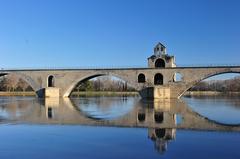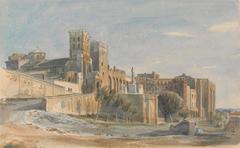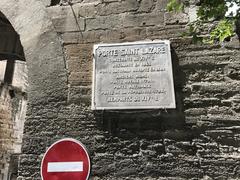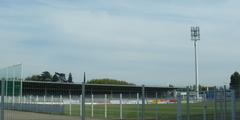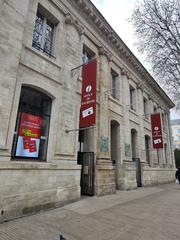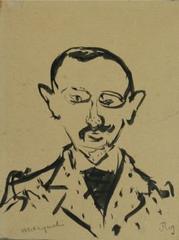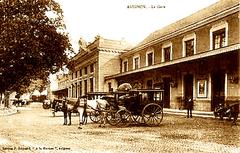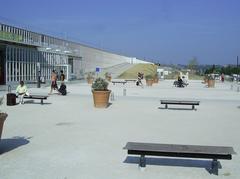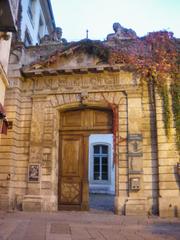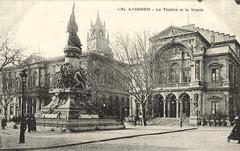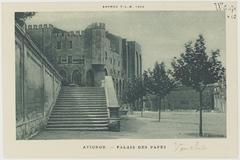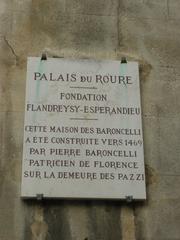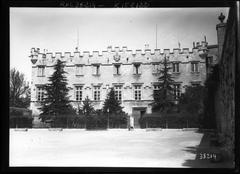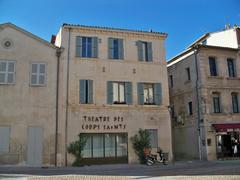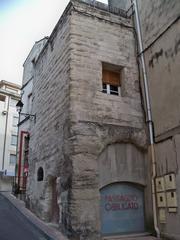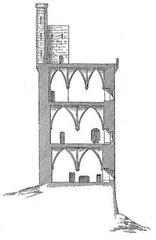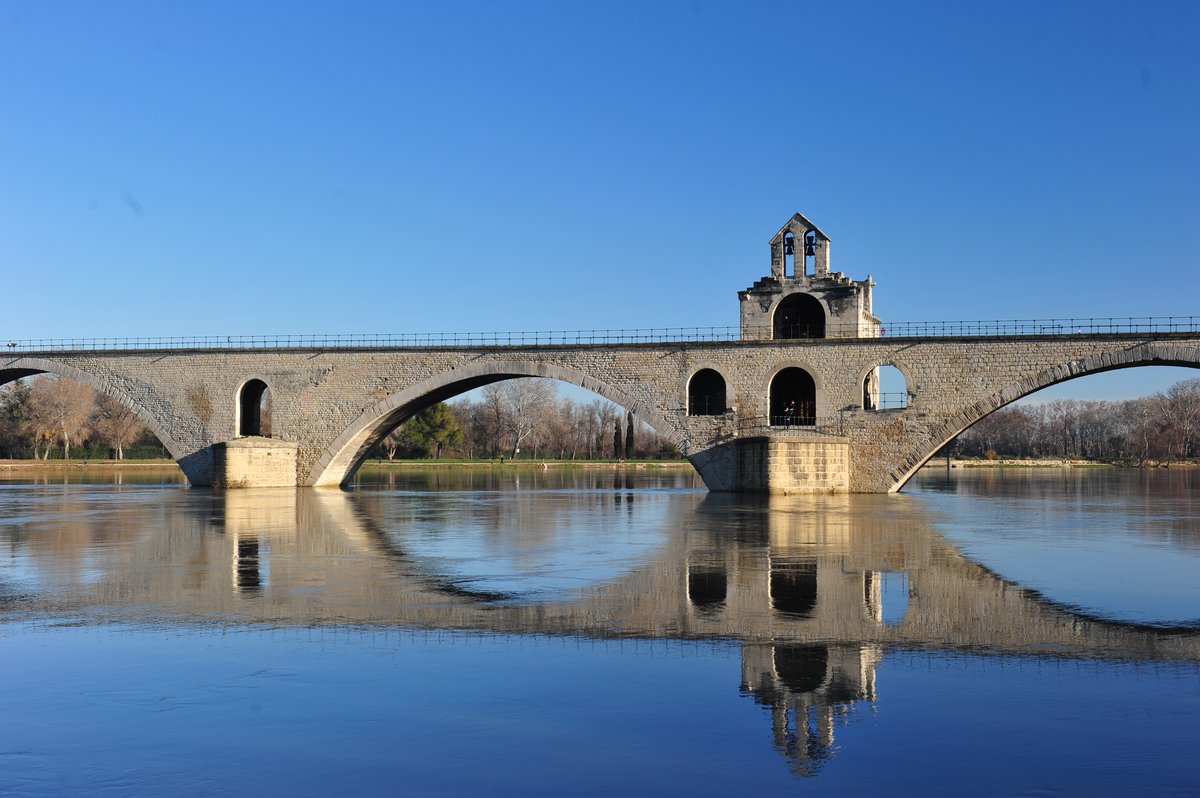
Pont Saint-Bénézet (Pont d’Avignon), France: Visiting Hours, Tickets, History, and Complete Guide
Date: 14/06/2025
Introduction
The Pont Saint-Bénézet, popularly known as the Pont d’Avignon, is one of France’s most iconic medieval structures and an enduring symbol of Avignon’s historical and cultural tapestry. This legendary bridge, with its striking arches stretching partway across the Rhône River, encapsulates centuries of history, faith, engineering prowess, and artistic inspiration. Today, only four of its original 22 arches remain, but the bridge continues to captivate visitors from around the world with its remarkable story, panoramic views, and UNESCO World Heritage designation.
This detailed guide covers everything you need to know for your visit: from historical context and architectural highlights to practical information about visiting hours, ticketing, accessibility, and nearby attractions. Whether you are a history enthusiast, a family traveler, or a curious explorer, the Pont Saint-Bénézet offers a memorable journey into the heart of Avignon’s medieval past.
(For further insights, see Avignon et Provence - Pont d’Avignon and Marvellous Provence - Pont d’Avignon.)
Table of Contents
- Introduction
- Origins and Construction
- Architectural Features and Challenges
- Strategic, Economic, and Religious Importance
- Cultural Significance and the Famous Song
- Notable Events and Modern Status
- Visiting Pont Saint-Bénézet: Hours, Tickets, and Accessibility
- On-Site Experience and Tips
- Nearby Attractions
- Visuals and Interactive Media
- Frequently Asked Questions (FAQ)
- Summary and Recommendations
- References and Further Reading
Origins and Construction
The story of Pont Saint-Bénézet is rooted in legend and medieval ambition. According to local tradition, a young shepherd named Bénézet was inspired by a divine vision in 1177 to build a bridge across the Rhône at Avignon—a feat many deemed impossible. After reportedly performing miracles to convince skeptical townsfolk, construction began and was completed in 1185 (marvellous-provence.com). The bridge originally spanned approximately 900–947 meters with 22 arches, making it the only stone bridge across the Rhône between Lyon and the Mediterranean in its time (Horizon Provence; Moyen Âge Passion).
Built primarily of local limestone, the bridge featured a narrow deck about 4 meters wide, suitable for foot traffic, carts, and livestock. The piers were ingeniously designed with pointed cutwaters to withstand the Rhône’s strong currents, and the bridge’s location leveraged a probable site of a ruined Roman structure for strategic crossing (Travel Notes and Beyond).
Architectural Features and Challenges
Medieval engineers faced immense challenges in spanning the Rhône. The river’s unpredictable floods and shifting channels frequently damaged the bridge. The original wooden superstructure was soon replaced by stone for durability. Despite these efforts, the bridge was repeatedly destroyed and rebuilt, most notably after the siege by King Louis VIII in 1226 and subsequent catastrophic floods in the 17th century.
Today, only four arches remain, abruptly ending mid-river and offering a dramatic testament to the power of nature and the ambition of medieval builders (Horizon Provence). The bridge’s most distinctive feature is the two-level Chapel of Saint Nicolas, constructed in the 13th century atop the second pier. The lower level honors Saint Bénézet, while the upper is dedicated to Saint Nicolas, patron of boatmen and travelers. Romanesque architecture—evident in the chapel’s rounded arches and thick walls—adds to the site’s charm and historical significance.
Strategic, Economic, and Religious Importance
The bridge’s completion transformed Avignon into a vital transit and economic hub. Before its construction, crossing the Rhône was dangerous and unreliable. The bridge enabled safer travel for merchants, pilgrims, and locals, facilitating the flow of goods and people and generating significant revenue through tolls (marvellous-provence.com).
During the 14th century, Avignon became the seat of the papacy, further elevating the bridge’s importance. The Pont d’Avignon linked the Palais des Papes with the cardinal residences in Villeneuve-lès-Avignon, solidifying its role as a strategic and political connector (travelfranceblog.com). The bridge also played a key role in medieval pilgrimage routes between Italy and Spain, and the chapels served as spiritual sanctuaries for travelers.
Cultural Significance and the Famous Song
The Pont Saint-Bénézet is immortalized in the French children’s song “Sur le Pont d’Avignon,” which dates back to the 16th century and gained popularity in the 19th century. While the lyrics describe dancing on the bridge, historical accounts suggest that festivities actually took place under its arches, especially on the Barthelasse Island. The song and legend have cemented the bridge’s place in French cultural memory (marvellous-provence.com).
In 1995, UNESCO recognized the Pont Saint-Bénézet, together with the Palais des Papes and Avignon Cathedral, as a World Heritage Site, ensuring its protection and continued prominence (spottinghistory.com).
Notable Events and Modern Status
The Pont d’Avignon has witnessed sieges, floods, and centuries of rebuilding. Notable events include its partial destruction during the 1226 siege and the collapse of many arches due to severe floods in the 17th century. By the late 1600s, the bridge was largely abandoned as a crossing, with only the four Avignon-side arches remaining today.
Conservation efforts in the 19th and 20th centuries stabilized the surviving structure. Modern technology, including 3D reconstructions by the CNRS, now allows visitors to visualize the bridge in its original grandeur (Moyen Âge Passion).
Visiting Pont Saint-Bénézet: Hours, Tickets, and Accessibility
Visiting Hours
- November to February: 10:00 AM – 5:00 PM
- March to November: 9:00 AM – 7:00 PM
Hours may vary on holidays and during special events. It’s advisable to check the official website for current times.
Tickets and Entry Fees
- Adults: €5
- Reduced (students, seniors): €3
- Children under 12: Free
- Combined ticket (with Palais des Papes): €14.50
Tickets can be purchased on-site or online. Combined tickets are recommended for those visiting multiple Avignon landmarks, especially during peak season (June–September).
Accessibility
The site is wheelchair accessible with ramps and reserved parking. Some areas, such as the chapel, may present challenges due to medieval architecture. Visitors with mobility needs are encouraged to contact the site in advance.
On-Site Experience and Tips
Walking the Bridge
Stroll along the surviving arches for stunning views of the Rhône, the city skyline, and Provençal landscapes. The bridge’s abrupt end mid-river is a poignant reminder of its turbulent history.
Saint Nicolas Chapel
Visit the two-level Saint Nicolas Chapel, featuring Romanesque and Gothic elements. Once housing Saint Bénézet’s relics, it remains a spiritual highlight of the site.
Museum and Interpretive Displays
The “Le Pont retrouvé” museum area offers interactive exhibits, archaeological finds, and a 3D reconstruction of the bridge circa 1550. Multilingual audio guides and touchscreen tablets enhance the experience with augmented reality.
Duration and Best Time to Visit
Allocate about one hour for a thorough visit. The site is primarily outdoors; check the weather before your arrival. Early mornings, late afternoons, and weekdays outside June–September are best for avoiding crowds. The bridge is beautifully illuminated at night, providing a unique ambiance for photographers.
Facilities
- Restrooms are available on-site.
- A gift shop offers souvenirs and local products.
- No café on-site, but many options are nearby in Avignon’s center.
Nearby Attractions
- Palais des Papes: The largest Gothic palace in the world, just a short walk away.
- Rocher des Doms: Gardens offering panoramic views of the city and bridge.
- Avignon Cathedral (Notre-Dame des Doms): A key religious site adjacent to the Papal Palace.
- Historic City Center: Discover medieval streets, markets, and Provençal squares.
Visuals and Interactive Media
Explore high-quality images and virtual tours of the Pont Saint-Bénézet, its arches, chapel, and views over the Rhône. Interactive maps and augmented reality experiences are available through the official website and the Audiala app.
Image Suggestions:
- “Surviving arches of Pont Saint-Bénézet over the Rhône River in Avignon”
- “Interior view of Saint-Nicolas Chapel on Pont Saint-Bénézet”
- “Philippe le Bel tower near Pont Saint-Bénézet”
Frequently Asked Questions (FAQ)
Q: What are the Pont Saint-Bénézet visiting hours?
A: November–February: 10:00 AM–5:00 PM; March–November: 9:00 AM–7:00 PM.
Q: How much are tickets?
A: Adults: €5; Reduced: €3; Children under 12: Free; Combined with Palais des Papes: €14.50.
Q: Is the bridge accessible to people with disabilities?
A: Yes, most areas are accessible by ramp, though some medieval sections may be challenging.
Q: Can I buy tickets online?
A: Yes, tickets are sold online and at the entrance.
Q: Are guided or audio tours available?
A: Yes, both guided and audio tours are offered in several languages.
Q: What else can I visit nearby?
A: Palais des Papes, Rocher des Doms, Avignon Cathedral, and the old town.
Summary and Recommendations
The Pont Saint-Bénézet is an enduring emblem of Avignon’s medieval heritage, blending legend, architectural brilliance, and cultural legacy along the Rhône. Its history—from Saint Bénézet’s miraculous foundation to its pivotal role in the Avignon Papacy—showcases its multifaceted significance as a spiritual, strategic, and economic hub. Today, its surviving arches and chapel offer a moving window into the past, while modern exhibits and digital reconstructions enrich every visit.
For the best experience:
- Check current visiting hours and ticket options.
- Consider combined tickets for Palais des Papes.
- Explore interactive exhibits and use audio guides for deeper understanding.
- Visit early or late in the day to avoid crowds and enjoy the bridge’s ambiance.
- Download the Audiala app for guided tours and augmented reality experiences.
Whether drawn by history, architecture, or the evocative atmosphere, a visit to Pont d’Avignon ensures an unforgettable journey through the story of Avignon.
